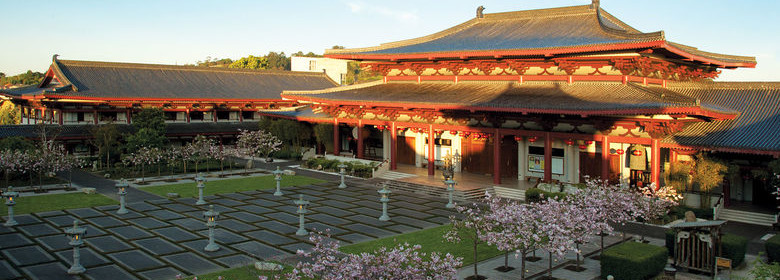BUDDHA’S LIGHT TEA
On this Vesākha (Pali; Sanskrit: Vaiśākha, Sinhala: Wesak or Vesak) day (another anniversary of birth, enlightenment and the final extinction of Gautama Buddha, it brings me, living in Moratuwa, Sri Lanka, a Theravada Buddhist (though not a good one at it), immense joy to present you all guys and dolls with one of those accessible and appealing tales and anecdotes of a book titled “Where is your Buddha Nature?”- stories to instruct and inspire written by renowned Venerable Master Hsing Yun, a whole-hearted Mahayana Buddhist, the founder of Fo Guan Shan monastery, Taiwan published by “Buddha Light and Living Private Limited.
Though Sri Lanka has been the custodian of Thervada Buddhism since the ancient times, it has also been enriched with some Sri Lanka Holidays cultural attractions of Mahayan Buddhism too. Among the most popular Buddhist sites featuring colossal Buddha statues in Sri Lanka, the statues in Buduruwagala, unlike others depict the concepts of Mahayana Buddhism.
So, following is the gleaning from “Where is your Buddha Nature?” ISBN 978-93-82017-09-7., of course with the exception of images and blushing (they are reddening, aren’t they?) labels.
Main hall of Fo Guang Shan [Chinese: Buddha’s Light Mountain] in Kaohsuiung. Fo Guang Shan is the largest Buddhist monastery & the largest charity organization of Taiwan.
Buddha’s Light Tea
Ding Sumei lived in Taichung. Before she became a Buddhist, she had no religious belief whatsoever.
Several years ago, during a very hot period in the middle of the summer, Ding came to Fo Guang Shan as a tourist wanting to see sites. As she strolled around around the mountain top looking at the statues and buildings, she gradually became quite warm. Pretty soon she began to perspire and feel thirsty. As she passed the Buddha Hall, she was received to be approached by a lay worker who asked if she would like to come inside for a cup of tea.
“Please try a cup of Buddha’s Light Tea,” the young woman said to her.
Since its inception in the year 1967, Fo Guang Shan of Mahayana Buddhism has evolved from bamboo forest to the largest monastery in Taiwan. Ven. Master Hsing Yun has inspired selfless devotion of over 1,000 monastics as well as the ardent support of many lay devotees to preach Buddhist way of living.
Ding went inside, and immediately her head was filled with the delightful aroma of tea steeping. Other people in the room were happily passing the time, conversing and then took out one hundred yuan to give to the young woman who asked her to come inside.
When the young woman saw what Ding was doing, she waved he hand I polite refusal.|
‘We have a rule here,” she said by way of explanation. “We don’t talk about others, and we don’t take money from anyone. We just talk about the Dharma [1] and drink tea.”
Ding laughed when she heard that and asked why the monastery would make such a rule like that.
“Master Hsing Yun made the rule over ten years ago,” the young woman explained. “ At the time, he noticed that people wo came to our monastery needed a pace to just rest and enjoy themselves for a while, so he set aside this room for that purpose. Since then, Buddha’s Light Tea has become pretty famous. People. People who come here now expect to have tea. So many people want tit, in fact, we have set up several other rooms here where you can also get Buddha’s Light Tea.”
Founder of Fo Guang Shan Monastery, Ven. Master Hsing Yun has dedicated himself to propagating the ideals of “Humanistic Buddhism” and being “a global person” in which the spirits of joy and harmony, integration and co-existence, respect and magnanimity, equality and peace are widely disseminated.
“It is a good tea,” Ding said
“I am glad you have enjoyed it, & I hope you will be like others & come back for more very soon.
Ding really did enjoy the tea. After that first visit she began returning almost once a month to Fo Guang Shan. Whenever she came, she always brought friends or relatives with her, and the first thing she always did was go straight to have some Buddha’s Light Tea.
Once someone asked her, “What’s so great about Buddha’s Light Tea? Taiwan has many great teas. Why do you think that one is so special?”
‘Other teas are good, that’s true,’ Ding said, ‘but only Buddha’s Light Tea carries the flavor of the Dharma in it. One sip of that tea can change your whole life.”
The Finest Black Tea in the world
is produced in Sri Lanka: Ceylon Tea
Sri Lanka’s Central Highlands is the main Ceylon Tea producing zone of Sri Lanka. During your Sri Lanka Holidays visit the Ceylon Health Triangle in the Highlands to enjoy the finest tea in the world and rejuvenate in the highland sanatariums.
[1] For practicing Buddhists, references to “dharma” (dhamma in Pali) particularly as “the Dharma”, generally means the teachings of the Buddha, commonly known throughout the East as Buddha-Dharma.





